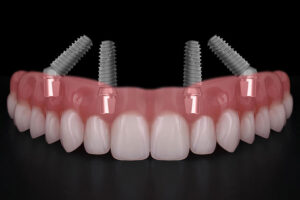Unless you list brushing your teeth as your favorite hobby, and are more likely to find a piece of floss stuck in your teeth than food, you probably have had a cavity.
When the sticky bacteria known as plaque comes into contact with sugar, the pesky plaque starts producing acids that slowly eat away at your teeth’s enamel. Brushing helps to remove the plaque from your teeth, but failing to brush regularly gives the acids produced by plague time to slowly eat away at your teeth’s enamel. The cumulative effect of those acid attacks can cause a cavity to form in a tooth that needs filling.
Dental fillings have come in many forms since the art of dentistry evolved from the days when toothaches were blamed on precocious demons and invisible worms. During the Civil War, dental fillings were made of a variety of substances, including lead, gold, silver, tin, platinum, and aluminum. During the mid-19th century, asbestos was even used to fill the space between a filling and a sensitive tooth.
Fortunately, dentistry has come a long way, and many advances in dental materials and techniques have provided dentists a variety of ways to create natural-looking smiles.
Determining which dental filling is right for you depends on a number factors. Your overall oral health, where the filling will be placed, the chewing load that particular tooth will bear, how many visits are needed to prepare the tooth for a filling, and cost can all influence the type of filling that best fits your needs.
Amalgam Fillings
The most common type of filling for over the last century, amalgam fillings are made of a stable alloy comprised from several different types of metal. Generally consisting of a combination of tin, silver, mercury, and copper, amalgam fillings are durable, easy to use, and relatively inexpensive. The use of mercury in amalgam fillings has generated some controversy in the past, but the when combined with the other elements, the mercury is render stable and safe for use. Because of their durability, amalgam fillings work well for molars located in the back of the mouth were most of the real chewing actions happens.
Amalgam fillings do have some drawbacks, including short-term sensitivity to heat and cold immediately after being implaned, and their shinny appearance causes them to stand out from your teeth’s natural color.
Composite Fillings
A mixture of glass or quartz filler combined with a resin medium, composite fillings are designed to blend perfectly with your teeth’s natural color. Composite fillings offer decent durability and can withstand a moderate amount of chewing pressure. They also require less tooth structure be removed when preparing your tooth for a filling, which could result in a smaller filling being installed than if Dr. Doyel used an amalgam filling.
Composite fillings may cost slightly more than an amalgam filling, and generally take longer to place. Composite fillings can also become stained or discolored over time.
Ionomers
Used less commonly than composite or amalgam fillings, ionomers fillings are made from a mixture of acrylic acids and glass powder to mimic the color of your tooth. Glass ionomers are fairly delicate compared to other types of fillings, and are often used in areas that experience little chewing pressure, such as between teeth and at the root structure.













